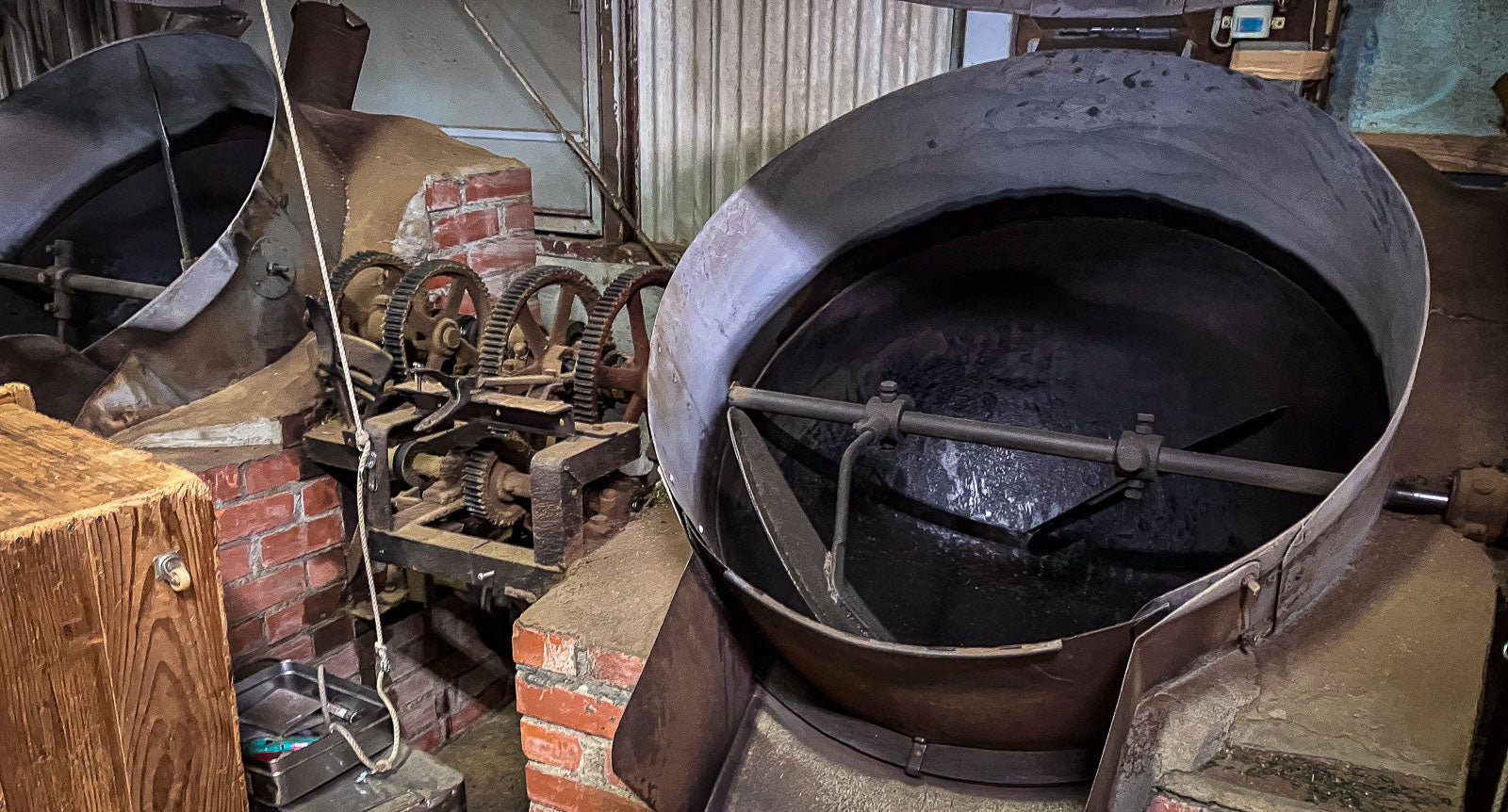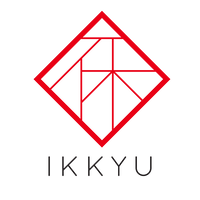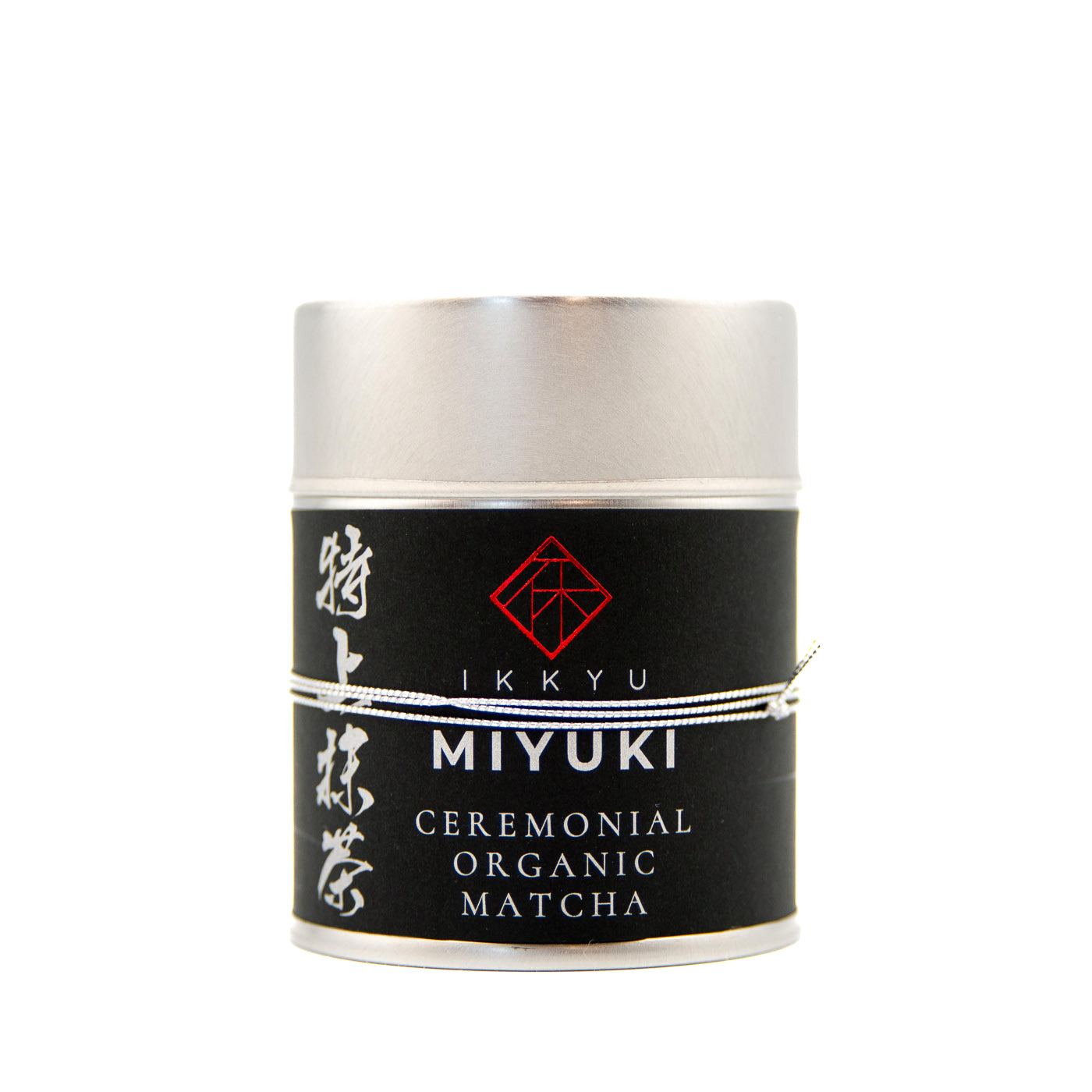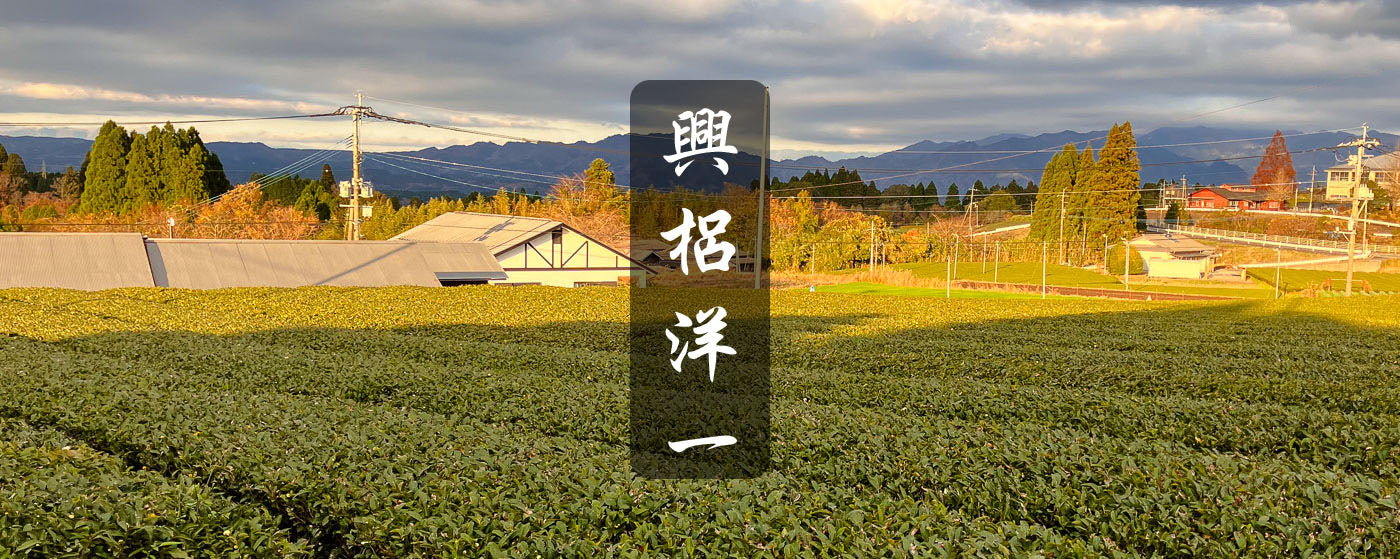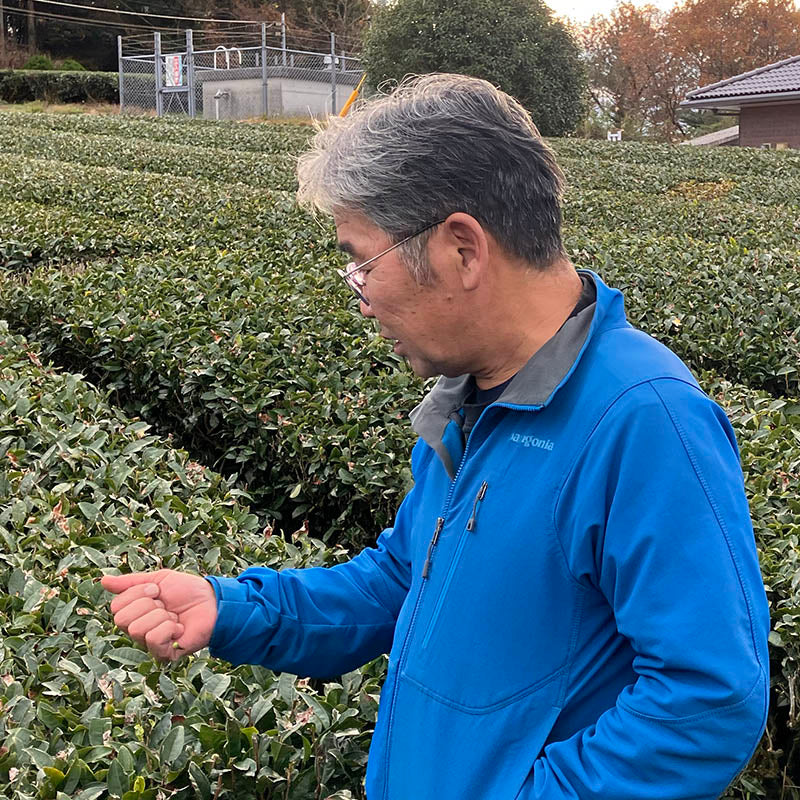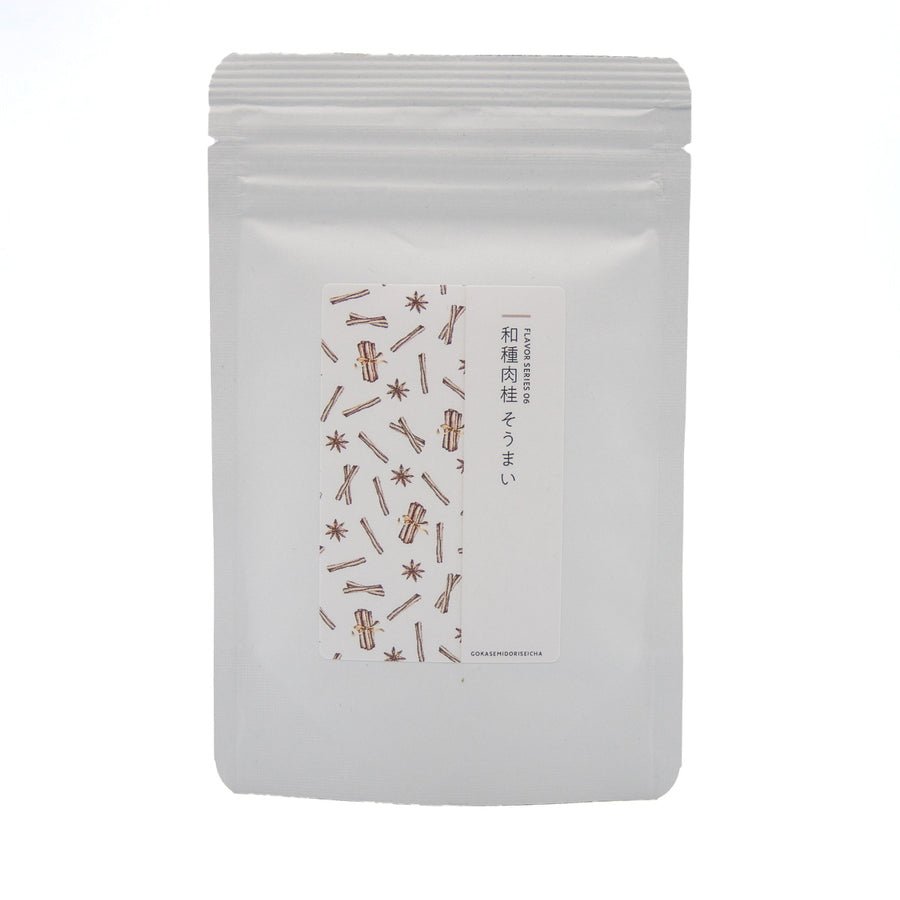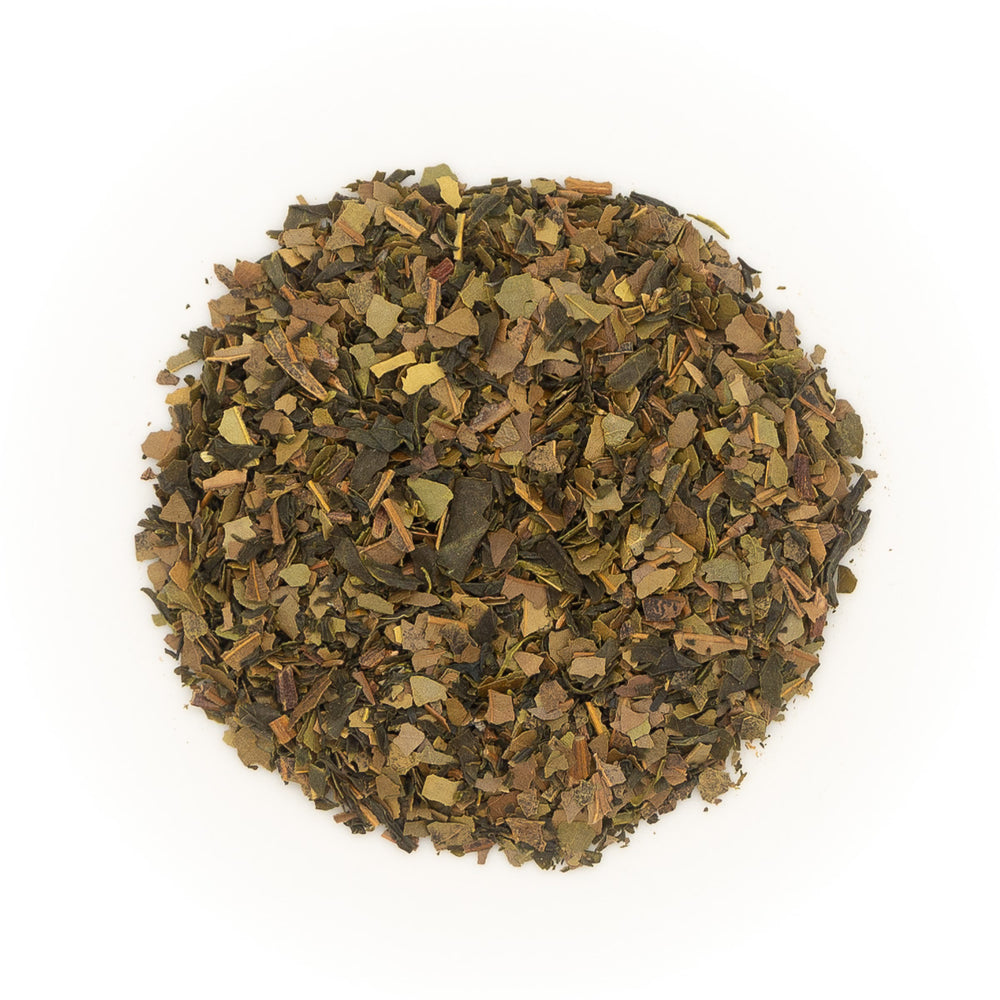Head of Gokase Midori Seicha, located in the dead center of Miyazaki Prefecture (sometimes colloquially called “Kyushu’s Bellybutton.”) Gokase, a town of just around 3500 people, is set high in the misty highlands, where it is said that tea culture was introduced in the early 1600s.
At 600 m above sea level, harvest season is much later than elsewhere in Kyushu. Rather than rush to compete with shipping times, this grower differentiates himself with taste and technique. He is the second generation steward of Gokase; his father learned how to make kamairicha and brought this knowledge to his own tea farm in the 1960s.
Their farm and factory has grown exponentially over the years, from a small, hand-mixed cement outpost to a fully-functioning production center. Their combined fields now encompass 8 hectares, where they grow a variety of cultivars used to produce award-winning kamairicha, black tea, and oolong. Korogi san enjoys wandering in his nearby forest, experimenting with roasting, fermentation, and herb mixes to produce distinct and fragrant teas. Under Korogi san’s guidance, Gokase Seicha became a JAS certified organic producer in 2013.
Initially wary of the potential of a poor harvest without using pesticides, Korogi san was convinced by positive results from initial testing and his own health concerns. Like many of our organic growers, he noticed health issues that he says coincided with pesticide application. Gokase Seicha has continued to win awards for organically produced tea, which has further strengthened his decision: even organic tea can be delicious.
GOKASE AREA
Our Visit To Korogi San
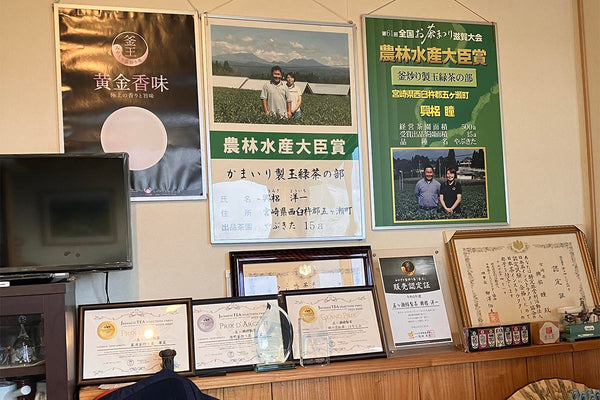
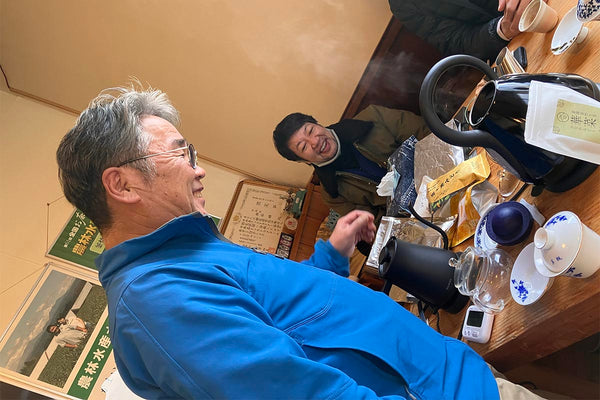
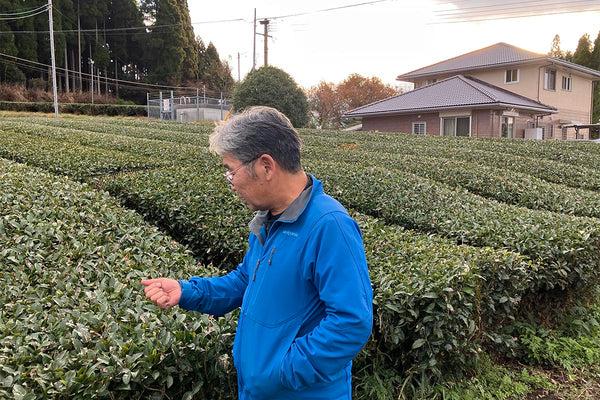
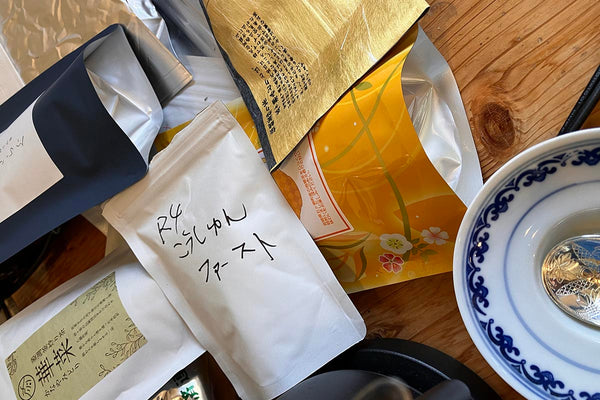
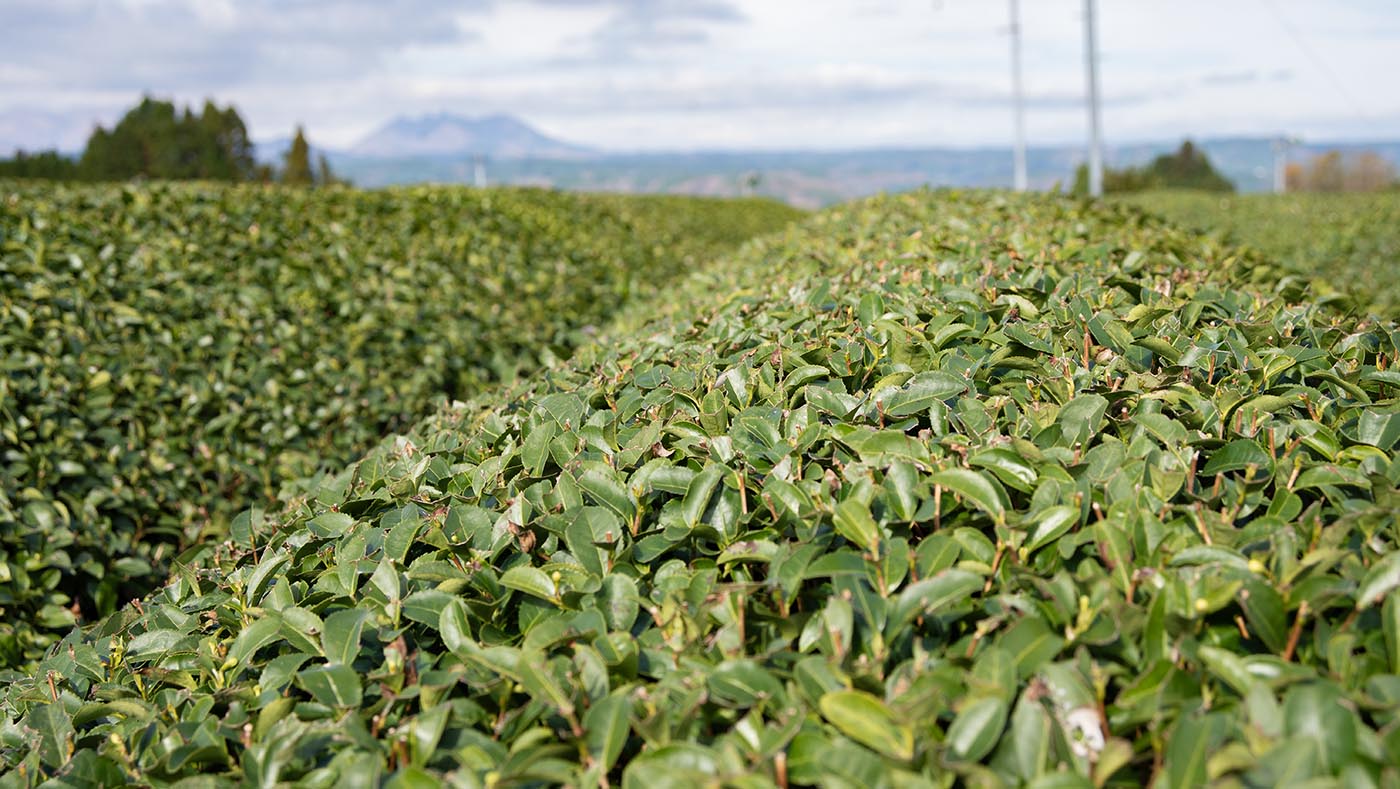
THE MIYAZAKI REGION
Between Sea & Mountains
